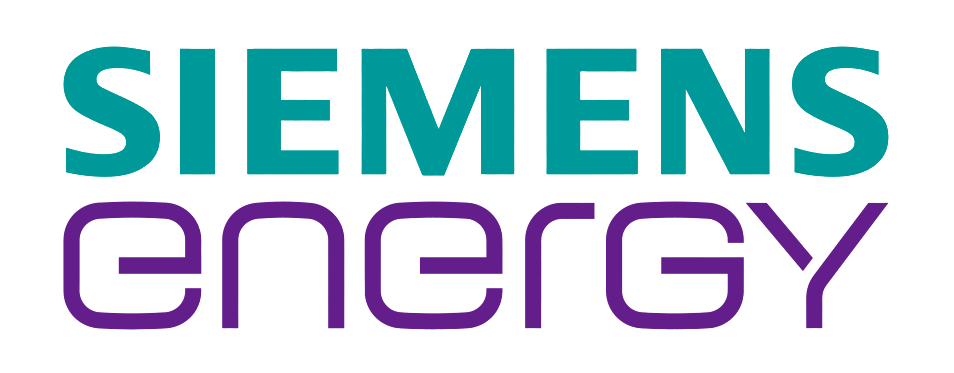
How mood-driven skincare is merging neuroscience, self-care, and innovation to redefine the future of beauty
The Skincare that listens to your mood
Have you ever felt instantly calm after applying a cream? That is not a coincidence, it’s neurocosmetics science at work
Neurocosmetics are specially formulated skincare products designed to interact with the skin’s nervous system, influencing not just appearance but also mood and emotional well-being. Today’s consumer wants more than just visible results. They want products that change how they feel. In a world where stress and burnout are part of daily life, people are turning to skincare and personal care routines not just to look better, but to support emotional well-being.
With emotional wellness becoming a key purchase driver, neurocosmetics are gaining momentum. This emerging category merges scientific innovation with the comfort of self-care.
Once dismissed as pseudoscience or clever marketing, neurocosmetics are now backed by clinical data and measurable results. At its core, neurocosmetics are about how topical products interact with the skin’s nervous system for modulating stress, enhancing mood, and supporting the skin-brain connection. This shift reflects something deeper: consumers are looking for experiences that resonate emotionally, not just aesthetically. And the brands that succeed next will be the ones that recognize and respond to this emotional shift with both scientific integrity and creative vision.
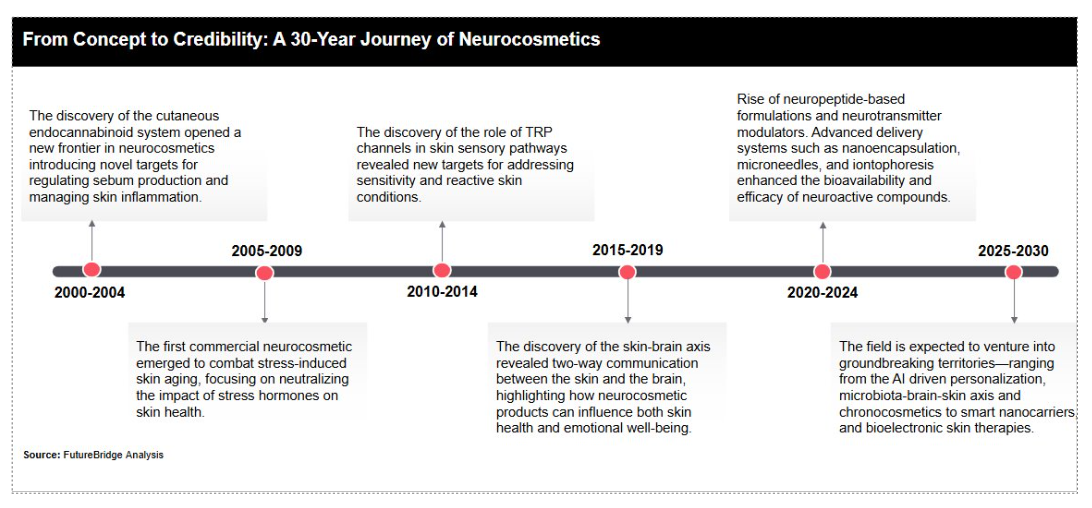
Decoding the skin–mind connection: The science of neurocosmetics
At its foundation, neurocosmetics target the skin–brain axis, a dynamic, bidirectional communication network involving neuroreceptors, cytokines, sensory neurons, and the skin microbiome. This connection allows topical formulations to influence not just the skin’s condition but also mood and emotional well-being concepts that are no longer speculative but grounded in emerging scientific evidence.
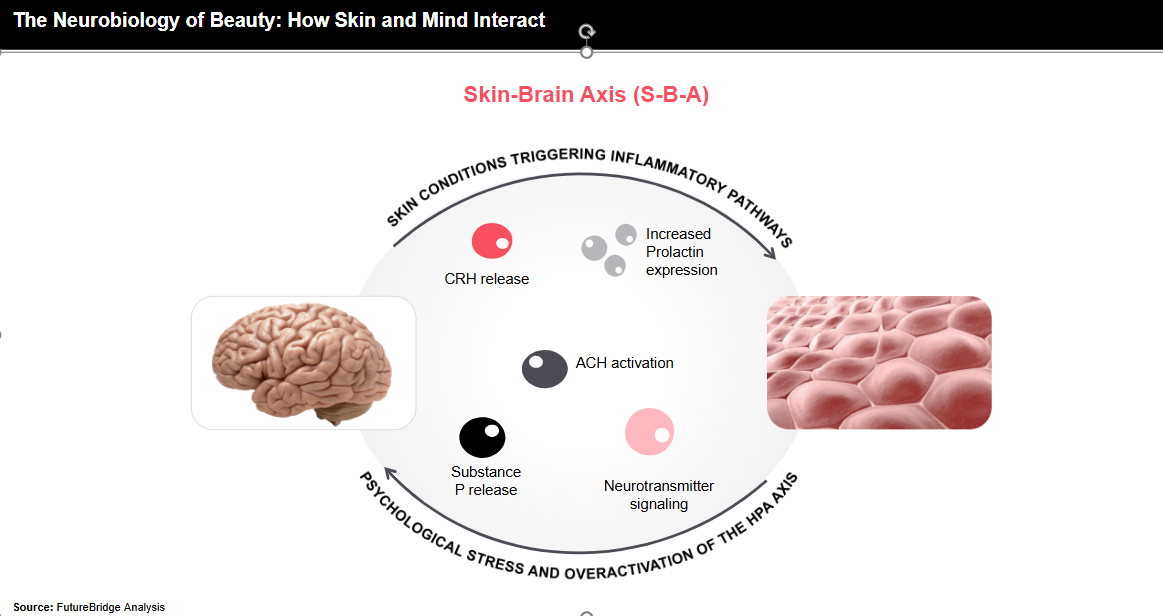
Neurocosmetic actives can act on several well-defined biological pathways:
- The Hypothalamic-Pituitary-Adrenal (HPA) axis, where skin cells can produce and respond to stress hormones like cortisol, influencing inflammation and barrier function.
- TRPV1 ion channels, sensory receptors in the skin responsible for detecting heat and pain; modulation of these receptors reduces skin sensitivity and discomfort.
- Neurotransmitter pathways, where ingredients may stimulate the release of serotonin or dopamine, contributing to mood improvement and relaxation.
- Neuroimmune signaling, where cytokines and immune cells interact with nerve endings in the skin to regulate inflammation, redness, and overall resilience.
Clinical studies now bridge the gap between claim and proof, linking specific active ingredients to measurable neurophysiological responses, such as lowered inflammatory markers, improved skin barrier function, and even enhanced emotional comfort scores for making the skin–mind connection in beauty care tangible, not just aspirational.
| A patented microalgae extract (Phaeodactylum tricornutum) illustrates the real potential of neurocosmetics. In a 28-day clinical trial with 42 participants, it reduced skin reactivity to capsaicin by 55% by modulating TRPV1 receptors, lowering IL-8 production, and maintaining microbial balance. Notably, the study also assessed mood and emotional well-being, with participants reporting improved comfort.
This is evidence-based skincare in action. |
Is Neurocosmetics the new must-have in beauty’s demand boom?
Neurocosmetics are capturing consumer attention as beauty and emotional wellness increasingly converge. In a crowded beauty market, emotional relevance is the real differentiator. Today, 4 in 5 consumers seek products that enhance their mood, and 76% factor in mental well-being when making beauty choices. Reflecting this shift, neuro-claim product launches rose by 3% between 2020 and 2024. As of 2025, market momentum continues to build, with the global neurocosmetics market valued at USD 1.67 billion in 2023 and set to reach USD 2.91 billion by 2030, growing at a CAGR of 8.24%. Brands tapping into this mind-skin connection stand to lead the next wave of beauty innovation.
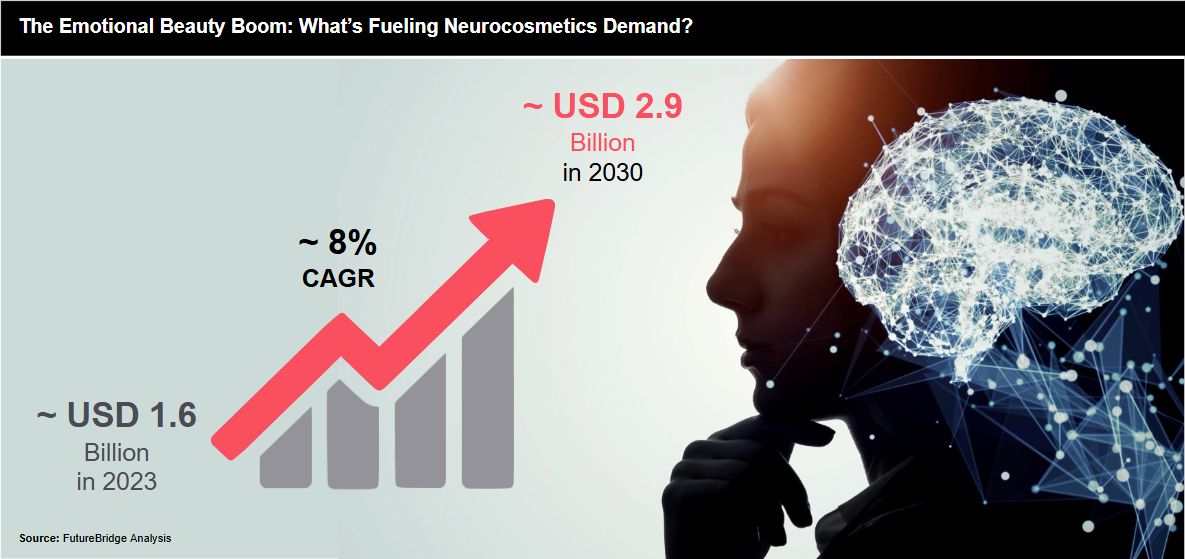
Technologies powering the Neurocosmetics revolution
As neurocosmetics evolve beyond traditional skincare, cutting-edge technologies are reshaping product development, personalization, validation, and turning the skin–brain connection into a measurable, actionable opportunity for brands.
 |
Artificial Intelligence (AI) & Personalization
AI is transforming neurocosmetic personalization by decoding emotional and sensory preferences. A patented system (KR1020250030658) uses conversational inputs and real-time sentiment analysis to recommend cosmetics tailored to individual mood and sensory desires. Through an interactive Graphical User Interface (GUI), it offers instant, personalized neurocosmetic suggestions-seamlessly integrating into consumers’ daily routines and elevating the shopping experience with emotional relevance. |
 |
Biotechnology & Novel Active Development
Biotechnology advances neurocosmetic development through innovative testing methods. A key patented invention (CN119104707) offers an in vitro platform simulating stressed skin–nerve interactions using HaCaT and neuron-like cells. By measuring biomarkers like TRPV1 activity and beta-endorphin secretion, this method provides a fast and reliable way to assess an ingredients’ ability to reduce stress responses, lower cortisol, and promote mood-enhancing effects—helping brands scientifically validate neurocosmetic claims with confidence. |
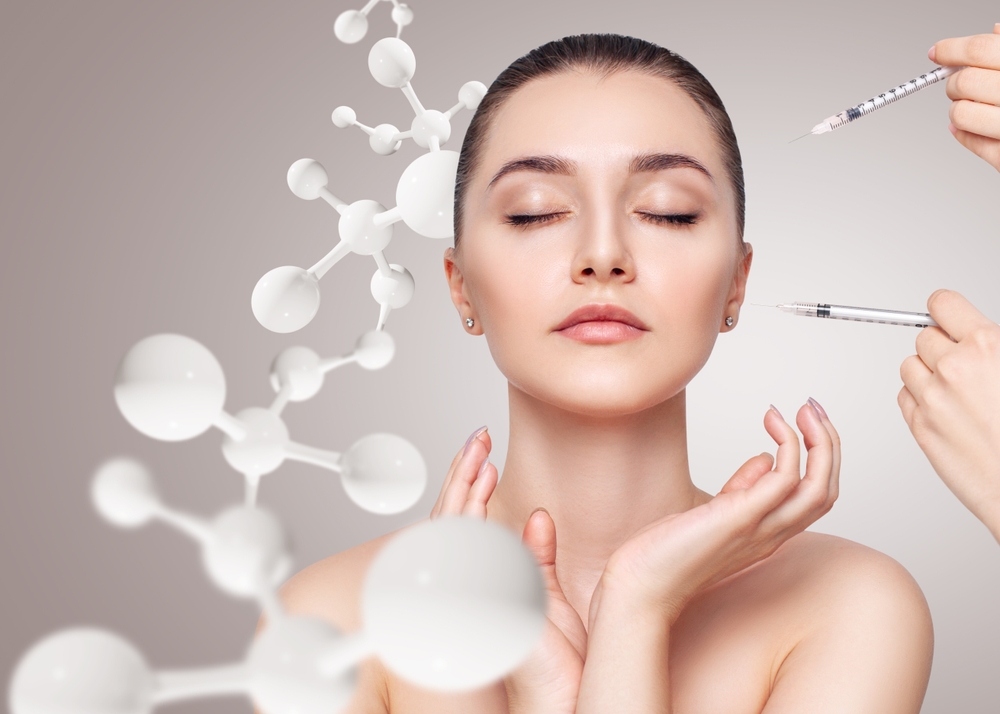 |
Targeted Delivery Systems
Sophisticated delivery technologies, such as nano-encapsulation, liposomal carriers, and smart release systems, enhance the stability, skin penetration, and targeted action of neuroactive compounds. These systems ensure actives reach specific skin layers or nerve endings, improving outcomes like stress reduction, anti-inflammation, and sensory modulation without systemic side effects. |
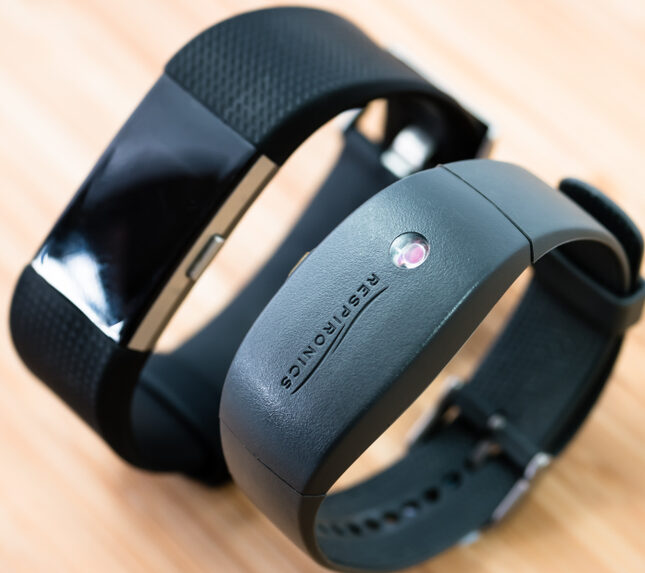 |
Neuroimaging & Biosensors for Efficacy Validation
Innovative tools such as functional MRI (fMRI), electroencephalography (EEG), and wearable biosensors are now used to measure the neurophysiological impact of cosmetic formulations in real-time. These technologies validate mood, stress, and cognitive changes induced by neurocosmetic products, closing the gap between subjective consumer claims and objective scientific proof. |
These technologies are not only elevating product performance but also building scientific credibility in a category where consumers increasingly demand transparency, personalization, and holistic benefits.
Can ingredients really speak to both skin and mind? Neurocosmetics say yes
Science confirms neurocosmetics truly bridge skin and mind. At the core of neurocosmetics are next-gen ingredients that go beyond surface care. These actives are formulated to support both skin health and emotional balance by engaging the skin–brain connection. Through pathways like the HPA axis, TRPV1 ion channels, and neurotransmitter systems, they help calm stressed skin while promoting a sense of well-being. It’s skincare that doesn’t just treat; it communicates, both biologically and emotionally.
- Neuromodulators: Mimic or inhibit neurotransmitters to modulate nerve signaling, reduce muscle contraction, or calm hypersensitivity.
- Circadian rhythm regulators: Restore skin’s biological clock by modulating melatonin or cortisol levels or synchronizing cell repair and detoxification with day-night cycles.
- Sensory modulators: Activate thermoreceptors or mechanoreceptors (e.g., TRPV1, TRPM8) to influence skin sensations like heat, cold, tingling, or relaxation.
- Plant adaptogens: Regulate skin’s stress response by modulating cortisol and boosting cellular resilience to environmental or emotional stressors.
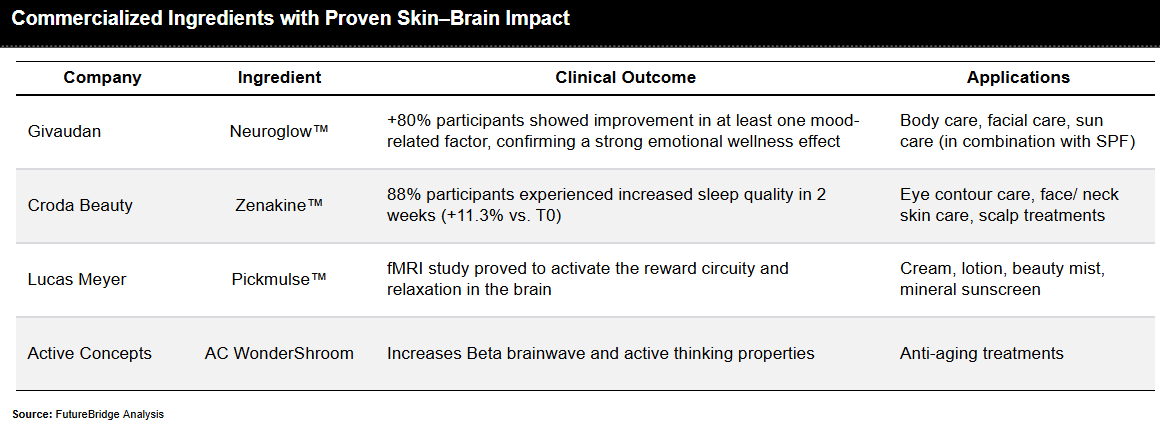
Neurocosmetics are redefining what beauty feels like
The future of beauty is no longer skin-deep. As science reveals more about the skin-brain connection, neurocosmetics are reshaping personal care by blending skincare, emotional wellness, and cutting-edge technology into a single, holistic experience.
Tomorrow’s products won’t just smooth fine lines or calm irritation. They’ll be designed to lift your mood, ease stress, and even support better sleep. With the help of AI-powered personalization, brands will soon go beyond analyzing skin type; onwards into tapping emotional states, lifestyle patterns, and stress levels to deliver skincare that speaks to both your skin and your mind.
The formulations themselves are evolving, too. We’re talking about neuropeptides to boost feel-good endorphins, microalgae to calm nerve receptors, and adaptogens that dial down cortisol. These formulations create rituals that relax the mind while nourishing the skin, paired with calming scents, rich textures, and sensory design. Advances in biotech, microbiome science, and delivery systems will make these actives even more precise, targeting the skin’s own communication networks.
But perhaps most exciting is the rise of real-time validation tools. Tools like EEG headbands, biosensors, and neurofeedback are beginning to measure how skincare influences mood, stress, and cognitive function. For the first time, emotional beauty claims are now being validated by real data, shifting trust from promise to proof.
Beauty is no longer just about results; it’s about resonance.
As neurocosmetics mature, the line between skincare and self-care will blur. For brands willing to invest in this science-driven, sensory-rich future, the opportunity is enormous, and the journey is just beginning.

Mood for Thought
We believe consumers are increasingly aware of how stress, sleep, and emotional states visibly impact their skin. The industry is waking up to a clear truth: caring for the skin and caring for the mind are no longer separate conversations. We’re seeing ingredients like biotics, beta-endorphins, and plant-based actives being used in new ways and not just to hydrate or smooth, but to influence mood, ease tension, and bring balance. This isn’t fluff. It’s the start of a smarter, more integrated approach to personal care; rooted in science and real experience.
But this space also comes with responsibility. Without robust science, transparent testing methods, and honest claims, neurocosmetics risk being dismissed as empty marketing. The real challenge now is to build trust through collaboration, research, and language that respects the complexity of both skin and mind.
The opportunity lies in bridging this gap: investing in strong research, forging cross-disciplinary collaborations, and shaping credible, evidence-based claims that will unlock the full market potential of mood-driven beauty solutions. For forward-thinking players, neurocosmetics isn’t just a product trend; it’s a mindset shift toward holistic, emotionally intelligent beauty.
Neurocosmetics are redefining beauty. Connect with FutureBridge experts to explore market shifts, regulatory drivers, and innovation opportunities
Need a thought partner?
Share your focus area or question to engage with our Analysts through the Business Objectives service.
Submit My Business ObjectiveOur Clients
Our long-standing clients include some of the worlds leading brands and forward-thinking corporations.
- © 2021 Cheers Interactive (India) Private Limited. All rights reserved. FutureBridge ® is a registered trademark of Cheers Interactive (India) Private Limited.































